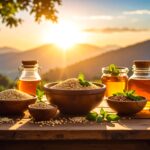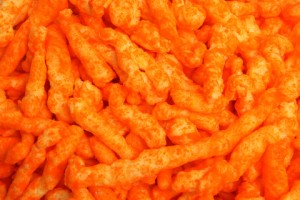Archive for the ‘Bevrages’ Category
Trends In Sweeteners

FUNCTIONAL FOODS/BEVERAGES>BEVERAGES
Natural spells sweet success for beverages
Today, educated consumers are scrutinizing their beverages for sources of sugar to cut back on the sweet stuff. Packaged Facts reported nearly 70 percent of consumers are actively scaling back on sugar consumption, and 66 percent of consumers consider sugar content when making a purchase.
Nov 14, 2018
One of today’s biggest considerations for food and beverage manufacturers is the worldwide prevalence of obesity, which has nearly tripled between 1975 and 2016. More than 1.9 billion adults aged 18 years and older were overweight in 2016. Of these more than 650 million adults were obese. Overall, about 13 percent of the world’s adult population were obese in 2016.
The latest data from the Centers for Disease Control and Prevention (CDC) reports nearly 40 percent or 93.3 million U.S. adults and 18 percent or 13.7 million children and adolescents are obese.
The food industry can play a significant role in in promoting healthy diets. In 2012, the Institute of Medicine (IOM) issued a report outlining five goals for preventing obesity—one of which was making healthy food and beverage options available and affordable.
Though cultures around the world differ widely in their cuisines, music and traditions, there is one thing they all seem to have in common: a bit of a sweet tooth. Of the five basic tastes—sourness, saltiness, bitterness, umami and sweetness—the last one is the only one that is regarded as pleasurable across most, if not all, cultures, reported Packaged Facts in its April 2016 “Food Formulation Trends: Ingredients Consumers Avoid, 2nd Edition” report.
Where preferences for sweetness have become a problem, though, is in developed countries where added sugar is now in the hot seat as one of the main drivers for obesity and cited as a cause for many health concerns.
According to the USDA’s 2015-2020 Dietary Guidelines for Americans (DGAs), added sugars contribute almost 270 calories per day to American diets, with the highest counts reported in children, adolescents and young adults. While sweet baked goods and candy often have been blamed for increased sugar consumption, the truth is consumers aren’t eating their sweets as often as they are drinking them. Packaged Facts reported beverages, including soft drinks, fruit drinks, energy drinks, sweetened coffee and tea, and flavored waters, account for almost half (47 percent) of all added sugars consumed by the U.S. population.
The problem? While added sugar has been known to increase risk of diabetes, obesity and cavities, new research has linked increased sugar consumption with a range of other health issues like heart disease, hypertension, stroke, gout, periodontal disease, fatty liver disease and more, noted the University of California. Plus, unlike sweet baked goods and candy, which are known indulgences, added sugar has historically lurked undetected in beverages perceived to be healthy like juice, tea and flavored water. No longer.
Today, educated consumers are scrutinizing their beverages for sources of sugar to cut back on the sweet stuff. Packaged Facts reported nearly 70 percent of consumers are actively scaling back on sugar consumption, and 66 percent of consumers consider sugar content when making a purchase. In all, almost three-quarters of U.S. consumers are concerned about the amount of sugar they consume, and one-third is extremely concerned.
As a result, sales of “sugary” drinks like soda and juice are suffering. According to data from SPINS, sales of shelf-stable soda and carbonated beverages remained flat during the 52 weeks ending Aug. 12, 2018, posting 1 percent growth. However, the category’s stability is largely thanks to the excitement surrounding sodas sweetened with a blend of stevia and other natural alternatives, which posted 30.4 percent growth in sales during the same period. International brands such as Coca-Cola and PepsiCo are adapting, launching varieties like Coca-Cola Life and Pepsi True, both reduced-calorie colas sweetened with a blend of sugar and stevia.
Juice is having a similarly rough go of it, posting 1.3 percent sales declines, thanks to subpar performances by orange juice (down 3.2 percent) and other conventional offerings. The silver lining, though, is when SPINS segments out the natural juices on the market, those sweetened with stevia posted 11.4 percent dollar increases.
Despite this, juice still has some ground to make up with consumers. The sugary stigma of juices plagues the category, as Mintel reported 41 percent of U.S. consumers who don’t purchase 100 percent fruit juice say they don’t buy it because it’s high in sugar. Of the consumers who will purchase such beverages, more than half say they read the nutritional labels. As it turns out, sugar content is rising steadily in the minds of clean label and conventional beverage shoppers as a topic to consider at retail.
Food Insider Journal’s 2018 Digital Magazine “Natural spells sweet success for beverages.”
You Can’t Judge a Food by Its Color – or Can You?
I remember the first time I heard about artificial food coloring. I was about 8 years old, and my friends and I had been told that Bubble Yum bubble gum (only THE best bubble gum on the planet) was going to be pulled from the shelves because it contained Red Dye No. 2, a suspected carcinogen. It was a chance we were willing to take, especially since we really didn’t understand the chance we were taking. We just wanted to blow bubbles the size of our heads. The FDA banned Red Dye No 2. in 1976 but, thankfully, Bubble Yum lived on.
So what is artificial color? According to the FDA, artificial colors, or color additives, are synthetically produced (or human made) and used widely because they impart an intense, uniform color, are less expensive, and blend more easily to create a variety of hues. Well, if you put it that way, I’m just fine with food manufacturers using artificial, petroleum-based (yum) colors instead of natural colors like paprika, beets, carmel or blueberries <insert sarcasm here>.
There are currently 9 synthetic dyes that the FDA has approved for use in food. The list includes: Blue 1, Blue 2, Citrus Red 2, Green 3, Orange B, Red 3, Red 40, Yellow 5 and Yellow 6. There have been several other dyes that were once on the approved list, but with additional testing, they were delisted as they were found to be hazardous in some way. For example, at one time specific red and orange dyes were used to make oranges more orange. But these specific artificial colors were taken off the market.
So why would someone want to color and orange more orange? Well, to sell more oranges, of course. Would you rather buy a perfectly orange orange, or one that was slightly yellow? The more appealing and attention getting, the more likely you are to purchase. This is often why you see so many brightly colored candies and drinks in products targeted at children. But ask yourself, when is the last time blue raspberry was a color found in nature? And if you’ve ever made macaroni and cheese from scratch and compared it to the bright orange powder that comes out of the box, I think you get my point.
It’s important to remember that just because a label says “natural” doesn’t mean ALL natural. There may be only one natural ingredient in the product. Several of the ingredient flavors and colors may, in fact, be artificial. Artificial colors are prevalent in so many foods, even foods you might associate with being healthy. I was shocked to find artificial colors used in my super model-endorsed yogurt. I’ve decided to look for another brand. All you have to do to check for artificial food colors is read the label.
There has been a lot of discussion regarding the possible ties between ADHD (attention deficit hyperactivity disorder) in children and artificial colors. There have been two large scale studies conducted in Britain to study the effects of artificial colors on children. While there is not conclusive evidence to prove a connection, there was enough concern that a European Union regulation was passed requiring a warning statement (“may have an adverse effect on activity and attention in children“) on foods that contain at least one of six dyes. According to John E. Huxsahl, M.D. with the Mayo Clinic, “There’s no evidence that food additives cause attention-deficit/hyperactivity disorder (ADHD), but an increasing number of studies show that certain food colorings and preservatives may cause or worsen hyperactive behavior in some children.”
With regard to the current 9 artificial colors that are allowed by the FDA, the Center for Science in the Public Interest (CSPI) believes there could be serious flaws with some of the testing. While all food colors (natural and artificial) must be approved by the FDA, artificial colors must pass tests to show that they are safe and don’t contain cancer-causing substances. But the FDA tests don’t always work as intended. According to CSPI, “Fifteen years ago, FDA and Canadian government scientists discovered that most of the carcinogen benzidine that can contaminate Yellow 5 and Yellow 6 is bound to molecules in the dyes. So routine FDA tests, which look only for “free” benzidine, fail to detect it. And the dyes are sometimes contaminated with 100 to 1,000 times more bound than free benzidine.” Yikes!
Fortunately, the world of natural colors is starting to grow. As more consumers raise their voices and demand healthier products, manufacturers are starting to utilize new, natural flavor sources like purple sweet potatoes, cochineal insects (yep, ground up bugs), and blue gardenias (which are not yet approved for use in foods in the U.S.).
Like you’ve read so many times before on this blog – it is VERY important to read labels. While you’re reading the label for nutritional information, be sure to read the list of ingredients and look for artificial flavors and colors. If you can’t pronounce it, you probably don’t want to eat it. Remember, the natural color of mint ice cream is not kermit-the-frog green and there is nothing natural about neon orange cheese puffs.

Recent Comments